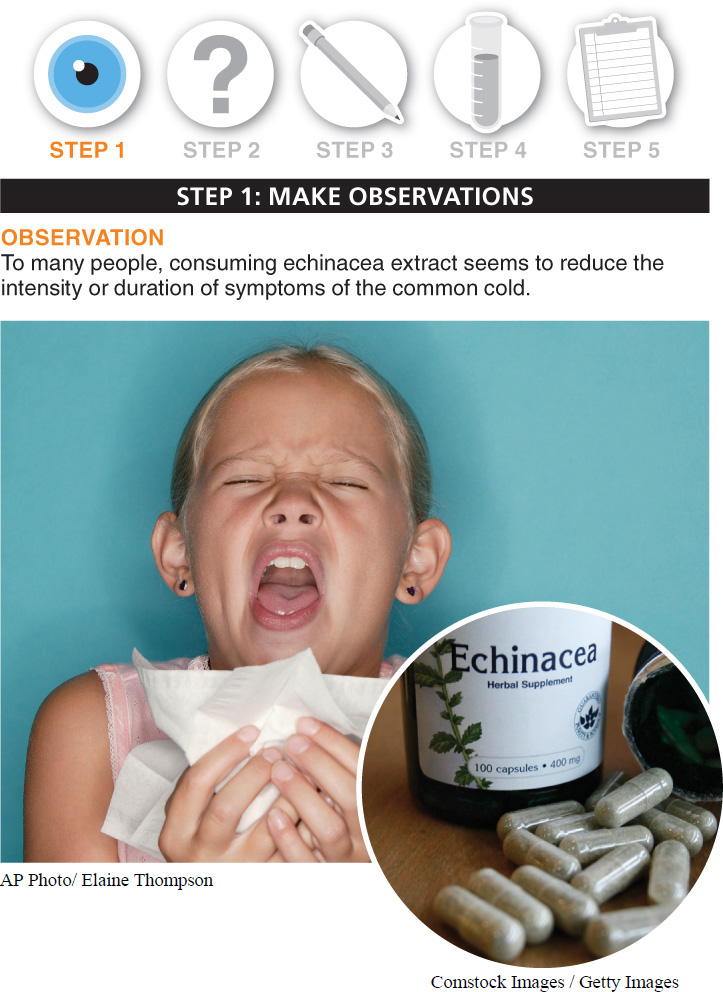Scientific study always begins with observations: we simply look for interesting patterns or cause-
Opportunities for other interesting observations are unlimited. Using the scientific method, we can (and will) also answer our two other questions.
9
Many people have claimed that consuming extracts of the herb echinacea can reduce the intensity or duration of symptoms of the common cold (FIGURE 1-8). We can ask: how do you know this is true?
- Does taking echinacea reduce the intensity or duration of the common cold?

Some people have suggested that shaving hair from your face, legs, or anywhere else causes the hair to grow back coarser and darker. Is this true?
- Does hair that is shaved grow back coarser or darker?
Using the scientific method, we can answer these questions.
TAKE-HOME MESSAGE 1.5
The scientific method begins by making observations about the world, noting apparent patterns or cause-
Provide an example of an observation about the world that could lead to a scientific study.
The textbook mentions apparent connections between echinacea and cold symptoms and apparent connections between shaving and the coarseness of hair. You may be able to think of other examples. Remember: good scientific observations note possible patterns or cause-and-effect relationships.